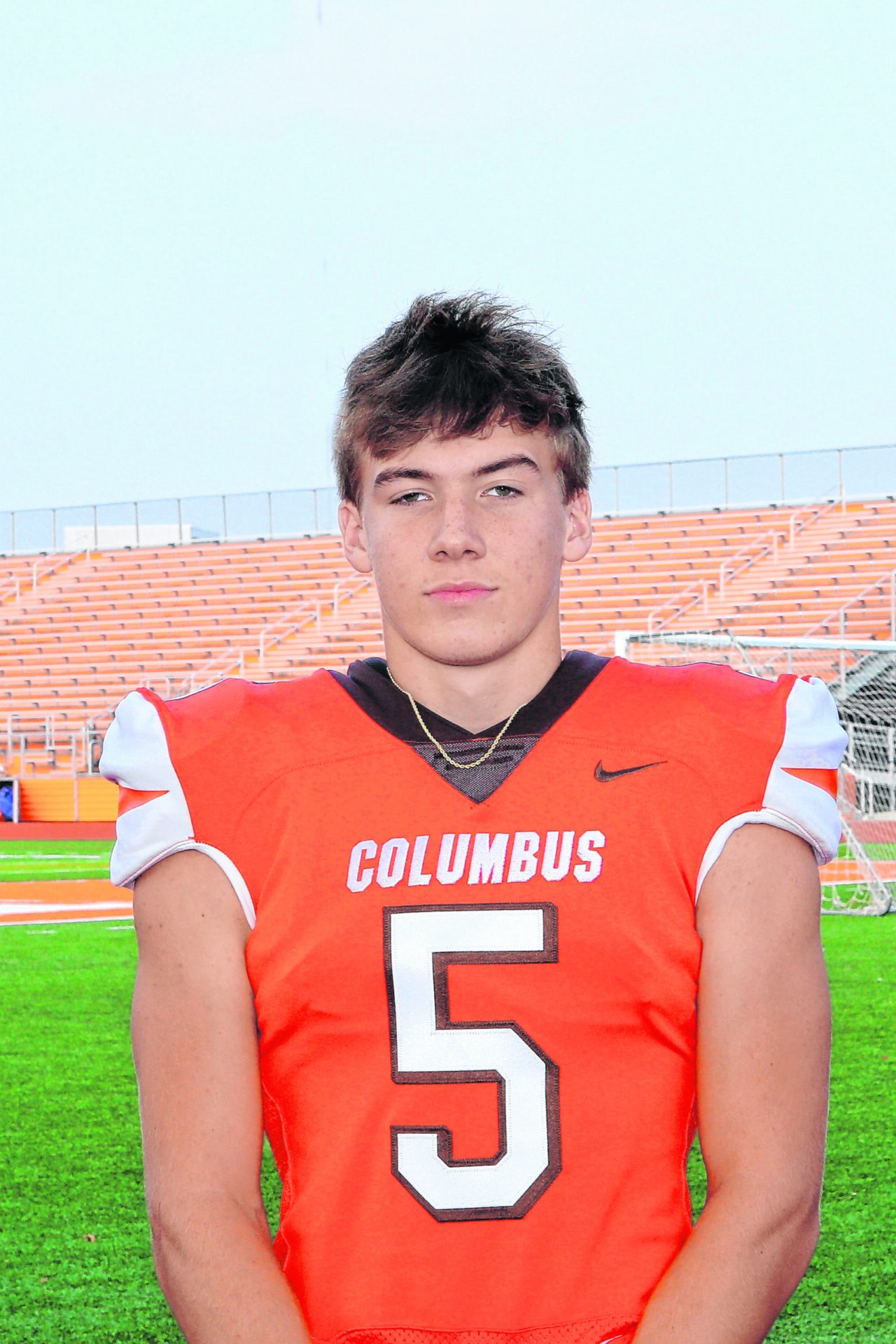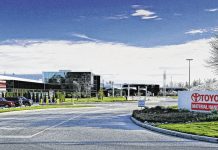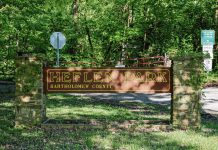An $80 million investment in two major projects in Columbus will be announced Wednesday, including a plan by Cummins to invest in its 200,000-square-foot corporate office building at 500 Jackson St., and a proposed railroad overpass leading into the city from the west side.
Gov. Eric Holcomb, Cummins President and Chief Operating Officer Rich Freeland and Indiana Department of Transportation Commission Joe McGuinness are scheduled to attend, along with Louisville & Indiana President John Goldman.
Also Wednesday, Cummins, along with the governor, INDOT, Columbus Mayor Jim Lienhoop and railroad officials will be announcing a partnership for construction of an overpass at the State Road 46/State Road 11 railroad crossing, which the city has been pursuing for more than a year.
“The two projects are very interconnected,” said Jon Mills, Cummins director for external communications.
[sc:text-divider text-divider-title=”Story continues below gallery” ]
A news conference to announce details about the two projects is scheduled for 1 p.m. Wednesday outside the downtown Columbus corporate headquarters of the Fortune 200 company.
The city has been pressing for a viable option to compensate for anticipated traffic congestion that would result from longer, faster and heavier CSX trains that will begin hauling freight through Columbus. Increased train traffic will be northbound on the Louisville & Indiana tracks beginning in the third or fourth quarter of 2018, Lienhoop has said in earlier interviews.
City consultant American StructurePoint’s impact study shows Columbus will begin experiencing as many as 22 trains a day traveling through the State Road 46/State Road 11 crossing compared to eight now. The trains will be longer, increasing traffic delays from an average wait of 13 minutes now, to 20 minutes in 2018 and up to 40 minutes by 2036 if the intersection isn’t modified, the consultants said.
Earlier this year, the city submitted a plan to INDOT proposing the state build an overpass and a pretzel-shaped traffic pattern intersection at the crossing, along with a preference that the railroad move its tracks further west away from downtown streets where railroad crossings currently exist.
The city estimated the cost of the overpass and pretzel-shaped traffic pattern at $27.2 million, and the cost of relocating the railroad and building the overpass at $94 million, which the mayor said earlier was far too much for the city to shoulder on its own.
In its proposal to the state, city officials proposed that INDOT pay $20 million of the cost for either option with the city pursuing ways to pay for the remainder of the railroad project.
Details about Cummins’ partnership on the project and the state’s contributions to the overpass project are to be announced at the Wednesday news conference.
The Cummins headquarters building, which opened in 1983 and was designed by architect Kevin Roche in the Modernism style, is the work home to about 1,500 employees, Mills said, including top-level executives who run the company’s multi-billion-dollar global enterprise from Columbus.
The Cummins Engine Co., as it was originally known, was founded by Clessie Cummins in 1919 with backing from Columbus banker William G. Irwin. Nearly 100 years later, Cummins Inc. in May reported first-quarter revenues of nearly $4.6 billion, a 6.9 percent increase from the nearly $4.3 billion in revenue it reported for the same period in 2016.
The corporate headquarters was designed by Roche in an unusual shape, allowing the architect to maximize the area of the glass exterior to provide employees with natural light and views of a central courtyard. Roche also worked with Cummins to preserve the Cerealine building, a red brick structure dating to the late 19th century, and the corporate office building was essentially built around that historical structure.
In interviews about the building, Roche said at the time he designed the building, Cummins leaders had a great interest in figuring out how to house a lot of people in close proximity while still providing them with enough privacy to do their work.
The building is known for its white concrete pillars at the trellised entrance and its two-story height, which was designed to blend into other buildings in Columbus’ downtown. Roche said in an earlier interview he wanted the building to be “low key” and that the late J. Irwin Miller, who had been chairman and chief executive officer of Cummins, wanted the building to be a continuation of Columbus itself.
The building also is known for the “Exploded Engine” sculpture by Rudolph de Harak which is featured in the front lobby.
[sc:pullout-title pullout-title=”About Cummins’ Inc. Corporate Office Building” ][sc:pullout-text-begin]
Architect: Kevin Roche
Architecture type: Modernism
Materials: Precast concrete and glass
Built: 1983
Address: 500 Jackson St.
Size: 200,000-square feet
Of note:
- Ivy-covered concrete columns
- Covers three city blocks
- Unusual shape to accommodate existing Cerealine building
- Quasi public park around the Cerealine building with ivy-covered columns, grass, trees, benches, a pond and fountains.
- Lobby features “Exploded Engine” sculputre by Rudolph de Harak
[sc:pullout-text-end][sc:pullout-title pullout-title=”Railroad overpass project” ][sc:pullout-text-begin]
Columbus has sent a conceptual design to the Indiana Department of Transportation for a railroad overpass at the State Road 46/State Road 11 railroad crossing, and possible rail realignment of tracks further west of downtown Columbus.
The new conceptual design announced this spring includes:
- Moving off the current path of State Road 46 further south and traveling through what is now farmland to a new overpass to be constructed over the Louisville & Indiana railroad tracks and State Road 11.
- The overpass itself is further south on State Road 11 than had originally been projected and is longer and wider than originally proposed.
- The pretzel pattern to allow access to the overpass is on the east side of the overpass so drivers entering or leaving Columbus will have unimpeded travel on State Road 46.
- The unimpeded travel includes no stoplight on State Road 46. The first stoplight motorists will encounter when entering downtown Columbus will be on the other side of the Robert N. Stewart Bridge, and when leaving downtown, further west on State Road 46.
- The alignment of the railroad tracks has also been slightly changed, moving further west than originally proposed and creating new grade crossings at Tellman Road, County Road 100N and Indianapolis Road, where the tracks will meet the original railroad alignment heading north.
- The railroad realignment includes the need for a new railroad bridge over the Driftwood River west of Mill Race Park.
The updated plan, being considered as a pending project before the Indiana Department of Transportation, is in competition with dozens of other projects nominated by cities and towns across the state.
To learn more about the city’s plans for a railroad overpass and possible rail realignment of tracks further west of Columbus, go to the city of Columbus website at columbus.in.gov/ and click on the railroad presentation link on the page.
[sc:pullout-text-end]





